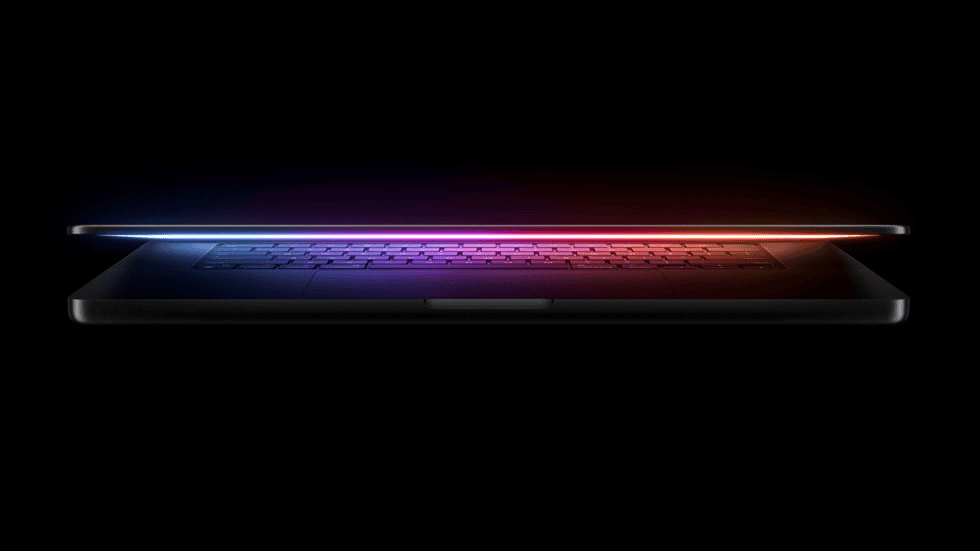Choosing the right MacBook for college can make a big difference in your studies. Apple offers several options that cater to different student needs and budgets. The MacBook Air M3 15-inch is the top pick for most college students in 2024. It balances power, portability, and price, making it a great all-around choice.
For students on a tight budget, the MacBook Air M1 13-inch is still a solid option. It’s more affordable but still packs enough punch for everyday tasks like writing papers and browsing the web. On the other hand, students in demanding fields like video editing or 3D modeling might want to consider the MacBook Pro M3 Max 16-inch. It offers top-tier performance for resource-intensive tasks.
When picking a MacBook, think about your major, the software you’ll need to run, and how much you’ll be carrying it around campus. Don’t forget to check for student discounts, which can save you money on your purchase.

Top Mac Picks for Students (2025)
Choosing the right Mac for your studies can significantly impact your productivity and overall academic experience. With Apple’s diverse lineup of computers, it’s essential to consider your needs, budget, and priorities. Here’s a breakdown of some of the best Macs for students in 2025:
| Mac Model | Pros | Cons | Best For | Price (Starting) |
|---|---|---|---|---|
| 13-inch MacBook Pro (M4) | More powerful than Air, decent screen size | More expensive than Air, no ProMotion display | Students needing more power but still portable | $1,299 |
| 14-inch MacBook Pro (M4 Pro/Max) | Powerful M4 Pro/Max chips, ProMotion display, great battery life, more ports | Expensive, heavier than smaller MacBooks | Creative fields, demanding tasks, professionals | $1,999 |
| 16-inch MacBook Pro (M4 Pro/Max) | Largest display, powerful M4 Pro/Max chips, ProMotion, excellent battery, many ports | Most expensive, less portable | Large display needs, creative pros, multitaskers | $2,499 |
| iMac (M4) | Beautiful 24-inch display, powerful M4 chip, vibrant colors | Not portable, requires peripherals | Desktop experience, larger screen for tasks | $1,299 |
| Mac mini (M4) | Most affordable Mac, powerful M4 chip, compact | Requires peripherals, not portable | Budget-conscious, existing peripherals, desktop setup | $599 |
| iPad Air (M2) | Portable, beautiful display, Apple Pencil support | Not a full computer replacement, less powerful | Note-taking, drawing, light tasks, companion to a Mac | $599 |
| MacBook Air (M4)* | Lightweight, long battery life, affordable | Smaller screen, less powerful | Students who prioritize portability and value | $1,099 |
13-inch MacBook Pro (M4)
- Pros: More powerful than the MacBook Air, slightly larger screen, still relatively portable.
- Cons: More expensive than the MacBook Air, lacks the ProMotion display of the 14-inch and 16-inch models.
- Ideal for: Students who need more processing power for demanding tasks like video editing or programming, but still value portability.
14-inch MacBook Pro (M4 Pro/Max)
- Pros: Powerful M4 Pro or M4 Max chip options, stunning ProMotion display with a 120Hz refresh rate, excellent battery life, more ports (including HDMI and an SD card slot).
- Cons: More expensive, larger and heavier than the MacBook Air and 13-inch MacBook Pro.
- Ideal for: Students in creative fields (graphic design, video editing) or those who need serious processing power for demanding tasks.
16-inch MacBook Pro (M4 Pro/Max)
- Pros: Largest display in the MacBook lineup, powerful M4 Pro or M4 Max chip options, ProMotion display, excellent battery life, more ports.
- Cons: Most expensive MacBook, less portable due to its size.
- Ideal for: Students who need a large display for creative work or multitasking, and prioritize performance over portability.
iMac (M4)
- Pros: Beautiful 24-inch display, powerful M4 chip, vibrant color options, great for desktop use.
- Cons: Not portable, requires external peripherals (keyboard, mouse).
- Ideal for: Students who prefer a desktop experience and need a larger screen for tasks like graphic design or video editing.
Mac mini (M4)
- Pros: Most affordable Mac, surprisingly powerful with the M4 chip, compact design.
- Cons: Requires external peripherals (display, keyboard, mouse), not portable.
- Ideal for: Students on a tight budget who already have a monitor, keyboard, and mouse, or those who prefer a desktop setup.
iPad Air (M2)
- Pros: Portable and versatile, beautiful display, supports Apple Pencil (2nd generation), long battery life.
- Cons: Not a full computer replacement for all students, can be less powerful than Macs for demanding tasks.
- Ideal for: Students who value portability and want a device for note-taking, drawing, and light productivity tasks. Can be a great companion to a Mac.
MacBook Air (M4)
The Macbook Air M4 is expected to come out in early 2025. When it does, it will be the top choice for students.
- Pros: Lightweight and portable, excellent battery life, affordable, powerful enough for most student tasks.
- Cons: Smaller screen, less powerful than MacBook Pro models.
- Ideal for: Students who prioritize portability and affordability. Perfect for taking notes, writing essays, browsing the web, and light creative work.
Choosing the Right Mac for You
Consider these factors when making your decision:
- Budget: Determine how much you’re willing to spend.
- Portability: How important is it to have a lightweight and portable device?
- Performance: Do you need a powerful machine for demanding tasks?
- Display: How important is screen size and quality?
- Software Needs: Ensure the Mac you choose is compatible with the software you need for your studies.
By carefully considering these factors, you can choose the best Mac to support your academic journey and set you up for success in 2025 and beyond.
Key Takeaways
- The MacBook Air M3 15-inch is the best choice for most college students
- Consider your major and budget when selecting a MacBook
- Look for student discounts to save money on your purchase
Choosing the Right MacBook for Students
Picking the best MacBook for school can be tricky. Students need to think about power, size, and cost when making their choice. Let’s look at the key things to keep in mind.
Assessing Computing Needs
Students should think about their course work when picking a MacBook. Art and design majors might need more power for big programs. The MacBook Pro could be a good fit for them. It has strong processors that can handle tough tasks.
For most other students, the MacBook Air works well. It’s good for writing papers, web browsing, and light photo editing. The M1 MacBook Air is still a solid choice in 2024. It’s fast enough for most school work.
Students who take lots of notes might like the 15-inch MacBook Air. Its bigger screen makes it easier to see many windows at once.
Performance vs. Portability
MacBooks are known for being light and easy to carry. The 13-inch MacBook Air is the lightest at just 2.7 pounds. It’s great for students who move around campus a lot.
The MacBook Pro is heavier but more powerful. It’s better for students who often work in one place. The extra power helps with video editing and 3D modeling.
Battery life is key for long study sessions. The M2 and M3 MacBook Air models can last up to 18 hours. This means students can work all day without needing to plug in.
Budget Considerations
Price is often the biggest factor for students. The M1 MacBook Air is the most affordable option. It’s still fast and works well for most college tasks.
Apple offers student discounts that can save money. These deals can cut $100 or more off the price of a new MacBook. Refurbished MacBooks from Apple are another way to save. They cost less but still have a warranty.
Some students may think about Windows laptops to save money. But MacBooks often last longer and keep their value better. This can make them a smart long-term choice.
Key Features for Academic Success
Choosing the right Mac for school means looking at battery life, screen quality, and storage space. These features can make a big difference in how well you study and work.
Battery Life and Charging
Long battery life is crucial for students who move between classes all day. The MacBook Air models shine here, offering up to 18 hours of use on a single charge. This means you can work through a full day of classes without needing to plug in.
The MagSafe port on newer Macs is also handy. It attaches magnetically and pops off easily if someone trips on the cord. This can save your laptop from falls.
For even more power options, the MacBook Pro models have longer battery life. They can last up to 22 hours, perfect for long study sessions or all-nighters.
Screen Size and Display Quality
Screen size matters when you’re reading textbooks or working on projects. The 13-inch MacBook Air is portable and easy to carry. But if you need more space, consider the 15-inch Air or the larger Pro models.
The Liquid Retina display on newer Macs offers sharp, bright images. This is great for design students or anyone who needs to see fine details. The MacBook Pro 16-inch has the biggest screen, which is useful for split-screen work or video editing.
Text looks crisp on these screens, reducing eye strain during long reading sessions. The Pro models also have better color accuracy, which is important for art or photography students.
Storage and Memory Considerations
SSD storage in Macs helps apps and files load fast. This is key when you’re quickly switching between programs or accessing large files. Most student tasks don’t need huge amounts of storage, so a 256GB or 512GB SSD is often enough.
Memory (RAM) is important for running multiple apps at once. 8GB is the minimum for basic tasks, but 16GB or more is better for demanding programs. This extra memory helps when you have many browser tabs open while using other apps.
Cloud storage can help if you need more space. It lets you keep files online and access them from any device. This can be a good way to save money on a higher-capacity SSD.
Connectivity and Expansion
Macs offer various options for connecting devices and expanding functionality. Students can plug in accessories and link to external displays for a better study setup.
Ports and Peripherals
Most Macs come with USB-C ports. These allow students to connect many devices like hard drives, keyboards, and mice. The MacBook Air has two USB-C ports, while the MacBook Pro models have more. Some newer Macs also include a MagSafe port for charging.
For students who need more connections, a USB-C hub is useful. This small device adds extra ports, letting you plug in more gadgets at once. It’s handy for connecting older USB-A devices or memory cards.
External Display Support
Macs can connect to external monitors, which is great for students who want a bigger screen for work. Most recent Macs use USB-C or Thunderbolt ports for this. These can send video, data, and power through one cable.
The MacBook Air supports one external display. MacBook Pro models can handle more, with some able to run up to four 4K displays at once. This is helpful for students who work with lots of windows or need a multi-screen setup.
For older monitors, you might need an adapter. HDMI is common, and many USB-C hubs include an HDMI port. This makes it easy to connect your Mac to TVs or projectors for presentations.







